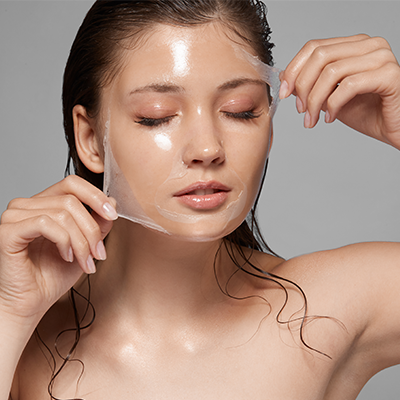Light vs. Medium vs. Deep Chemical Peels: What’s the Difference?

Chemical peels have become one of the most sought-after non-surgical treatments for achieving clearer, brighter, and more youthful-looking skin. These peels are available in varying strengths—light, medium, and deep—each designed to target specific skin concerns and penetrate the skin at different depths. Patients considering chemical peels in Islamabad are often curious about the differences between these peel types and how to choose the one best suited for their skin.
Understanding how each peel works and what kind of skin issues it addresses is essential in making an informed decision. From minor surface flaws to deep wrinkles and sun damage, there’s a peel tailored for almost every need.
What Are Chemical Peels?
Chemical peels involve applying a specially formulated chemical solution to the skin to remove the outermost layers. This controlled exfoliation stimulates new cell growth and reveals smoother, healthier skin underneath. The strength of the peel determines how deeply it penetrates the skin and what level of rejuvenation it offers.
Each type—light, medium, and deep—differs in the intensity of ingredients used, the recovery time required, and the kind of results it delivers.
Light Chemical Peels
Depth of Penetration:
Light peels exfoliate only the outermost layer of skin, the epidermis.
Common Ingredients:
-
Glycolic acid
-
Lactic acid
-
Mandelic acid
-
Salicylic acid
Ideal For:
-
Mild acne
-
Uneven skin tone
-
Dryness and rough texture
-
Early signs of aging
Benefits:
-
Brightens dull skin
-
Improves mild discoloration
-
Smooths rough patches
-
Minimally invasive with little to no downtime
Treatment Experience:
Most light peels feel like a mild tingling or warming sensation. Peeling is generally minimal and occurs as light flaking or dryness over a few days.
Recovery Time:
1 to 3 days with no disruption to daily activities
Recommended Frequency:
Every 2 to 4 weeks for ongoing skin maintenance
Medium Chemical Peels
Depth of Penetration:
These peels reach the epidermis and upper dermis (the deeper layer of skin).
Common Ingredients:
-
Trichloroacetic acid (TCA)
-
Jessner’s solution (a combination of lactic acid, salicylic acid, and resorcinol)
Ideal For:
-
Moderate wrinkles and fine lines
-
Sun damage and pigmentation
-
Acne scars and age spots
-
Uneven skin tone and texture
Benefits:
-
Promotes collagen production
-
Reduces visible imperfections
-
Improves elasticity and skin tone
-
Longer-lasting results than light peels
Treatment Experience:
Slight burning or stinging is common during application. The skin typically becomes red and tight before it begins to peel.
Recovery Time:
5 to 7 days with visible peeling and redness. Most people can return to work with minor adjustments.
Recommended Frequency:
Every 3 to 6 months depending on skin type and desired results
Deep Chemical Peels
Depth of Penetration:
These penetrate deep into the dermis and offer the most dramatic results.
Common Ingredients:
-
Phenol
-
High-strength TCA
Ideal For:
-
Deep wrinkles and folds
-
Severe sun damage
-
Blotchy or leathery skin
-
Pre-cancerous growths
Benefits:
-
Profound skin rejuvenation
-
Smoother texture
-
Long-lasting results
-
Reduction of even the most severe signs of aging
Treatment Experience:
Deep peels can be uncomfortable and usually require anesthesia. Because of their intensity, they are typically done only once.
Recovery Time:
10 to 14 days of significant redness, peeling, and crusting. Social downtime is considerable, and patients must follow strict aftercare guidelines.
Recommended Frequency:
Usually once in a lifetime due to their potency and long-term effects
Choosing the Right Chemical Peel
Selecting the correct type of peel depends on your skin type, concerns, lifestyle, and desired outcomes. A professional skin assessment is vital to determine which strength of chemical peel will offer the best results with the least risk.
-
Go for a light peel if you want a fresh glow with no downtime and are new to exfoliating treatments.
-
Choose a medium peel if you need more noticeable improvement in skin tone, acne scars, or pigmentation.
-
Opt for a deep peel only if your skin concerns are severe and you are prepared for a longer healing process.
Skin Types and Chemical Peels
It’s essential to consider your skin tone and sensitivity when selecting a peel. People with darker skin tones must be cautious, especially with medium and deep peels, as there's a higher risk of post-inflammatory hyperpigmentation. Consulting a certified practitioner who understands skin of color is crucial.
Additionally, patients with conditions like eczema, rosacea, or active infections may need to avoid certain types of peels.
What Results to Expect
Each peel delivers different results:
-
Light peels offer subtle enhancement and are ideal for monthly skin maintenance.
-
Medium peels provide moderate improvement in texture, tone, and scarring.
-
Deep peels can dramatically transform the skin but come with extended recovery and increased risk.
Post-treatment, it’s essential to protect the skin from sun exposure and follow all aftercare instructions to achieve optimal results. Peels are most effective when incorporated into a long-term skincare strategy that includes sun protection, hydration, and proper cleansing.
Can Peels Be Combined with Other Treatments?
Yes, chemical peels can be combined with other cosmetic treatments for enhanced outcomes. For instance, they often work well when paired with microneedling, dermaplaning, or facials. However, combining treatments should always be discussed with your skincare professional to ensure safety and effectiveness.
Conclusion
Chemical peels offer a versatile range of solutions for various skin conditions, and understanding the difference between light, medium, and deep peels is key to achieving your skincare goals. From mild exfoliation to significant rejuvenation, these treatments can be customized to fit your needs and lifestyle.
For expert evaluation and safe, personalized treatments, the SKN Cosmetics clinic offers comprehensive skincare solutions performed by trained professionals. Whether you’re starting with a light peel or exploring advanced rejuvenation, their team is equipped to guide you through every step.
- Art
- Causes
- Crafts
- Dance
- Drinks
- Film
- Fitness
- Food
- Spellen
- Gardening
- Health
- Home
- Literature
- Music
- Networking
- Other
- Party
- Religion
- Shopping
- Sports
- Theater
- Wellness



